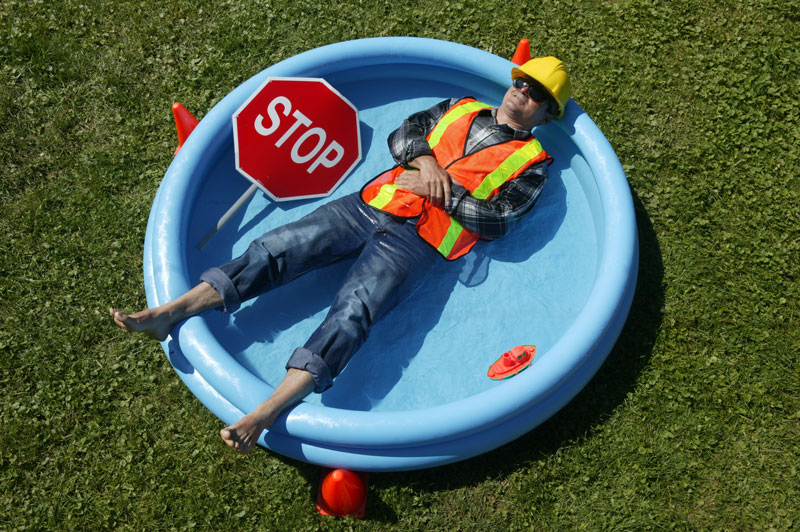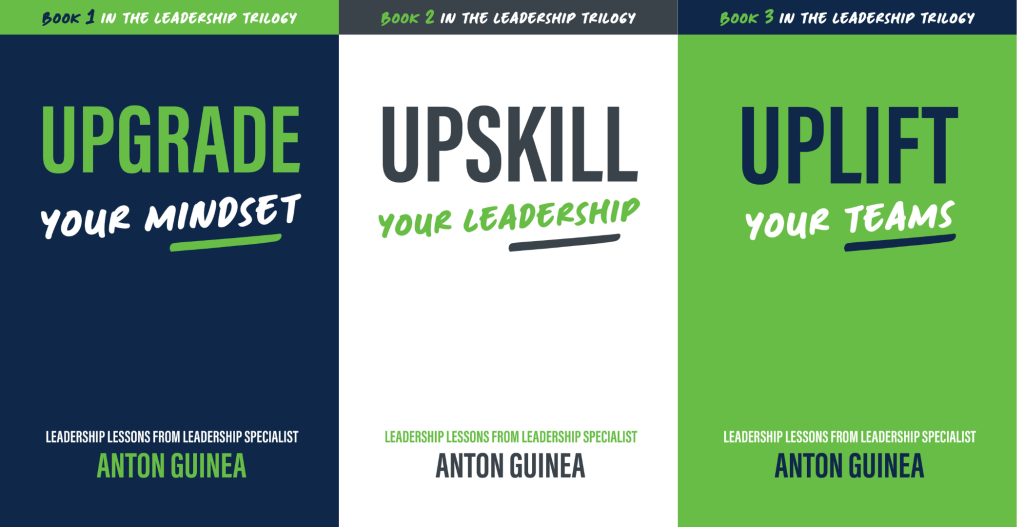Anton Guinea
Entrepreneur, Speaker, bestselling author, and founder of The Guinea Group of Companies. For over 15 years, Anton has helped leaders move their teams to become psychologically safe, physically safe and overall better versions of themselves.

Reducing Risk Taking during the Silly Season!!!

“More workers die in the weeks leading up to Christmas than at any other time of year”, according to WorkSafe Victoria statistics, which found that over the past decade, almost 25 per cent of all workplace fatalities occurred in November and December (aihs.org.au).”
The rush (and pressure) to meet deadlines coupled with the distraction of the silly season mean that workers are more likely to lose focus at this time of year. With a loss of focus, comes poor decision making, and increased risk-taking behaviour.
What we know about safety (and life) is the ABC model, which means that our attitude (beliefs) drives our behaviour (decisions), drives our consequences (outcomes). In short, our lives are a consequence of our decision making. The better decisions we make, especially at work, the more likely it is that we will go home at least as psychologically and as physically safe as when we arrived.
In this blog post, I am going to focus very specifically on changing the behaviour of the leader … not the behaviour of the team member.
Team member behaviour change is a result of leader led example and needs to be of concern for leaders heading into the silly season.
Given that research clearly demonstrates that incident and injury rates spike at this time of year, due to increased pressure, a lack of focus … or even fatigue, leaders should be thinking about what they can do to make this year different to others. What can they do to ensure that they ‘change the trend’ and keep their teams safer this silly season?
To unpack this question for leaders, I will refer to a meta-analysis done by Hofmann, Burke and Zohar who studied 100 Years of Occupational Research. What they collated was the blueprint for safety leadership in general, and for safety leadership at this time of year. The takeaways for leaders are around understanding safety climate, being aware of their micro-decisions, and fostering team member co-operation and communication.
1. Understand the concept of Safety Climate
When we think about safety incident and injury trends in organisations, the two most common words are ‘safety culture’. The concept of safety culture was first used and cited as the major failing that led to the Chernobyl disaster in 1986. Prior to that, in 1980, Zohar described safety climate as “shared employee perceptions about the relative importance of safe conduct in their occupational behavior.”
My interpretation of safety climate versus safety culture is that climate is like the weather – it changes. It gets hot and it gets cold. It gets rainy and at times it hails. Safety climate is short term, and it changes based on internal or external influences. Safety culture is more like a season than the weather – Summer is hot, and winter is not. Culture is longer term. And yes, there are measurement tools that address the level of both safety climate and culture in organisations.
During the silly season, the safety climate changes to one that includes increased pressure. Both internal stress – to get work done – and external duress – to meet deadlines. All whilst working safely. The pressure is not just a team member pressure, it is also a leader pressure. Leaders can underestimate their own ability to cope during the silly season, and they can forget that their own beliefs drive their behaviour. If leaders believe that deadlines are important, no matter how much they say that safety is their top priority, their beliefs will show up in how they present with their teams.
The takeaway is – reflect on what you feel and think about safety at this time of year, and if you need to be thinking about time out, self-care, or any other coping strategies that you need to make sure that as a leader you are in charge of yourself and your emotions (and your behaviour).
2. Understand the impact of micro-decisions
Some leaders still do not grasp the importance of their decisions, and how everything they do sets an example for their teams to follow. Teams can be a reflection of their leader. Team members learn what is both expected, and accepted, by how their leader behaves. They learn what their leaders’ priorities are by the way they behave, and by how the leader manages conflicting priorities. Which is an issue at this time of year – what do we focus on next?
Micro decisions are the very small things that leaders do, that sometimes they are not even aware of. How fast to walk. What tonality to use. What volume to speak at. How to interact. Most micro-decisions show up during social interactions. Many, many micro-decisions are made by leaders every day, and the ones that matter are made in safety sensitive situations. “These micro-decisions often occur when competing goals butt-up against one another and supervisors, team leaders, and/or more experienced employees make decisions about which strategic priority takes precedence (e.g., use a make-shift replacement part or wait two days for the correct part to arrive)” – from Hofmann, Burke, and Zohar’s research.
In my opinion, the micro-decisions of leaders become the macro-decisions of their team members. Team members take words, or actions, and turn them into direction. This might even happen unconsciously, as team members might justify their risk taking with thoughts or comments around ‘it is what my leader wants or expects’. The challenge for leaders is to both understand that their micro-decisions are being observed, and then to be vigilant around how their example has been interpreted and turned into team macro-decision making.
The takeaway is – during the silly season particularly, be hyper aware of what your micro-decisions are telling your teams, and how they can be interpreted.
3. Understand how to develop team cohesion
A journal article from Turner and Parker (2003) found that team member interaction, and team member to supervisor co-operation and communication, as well as team cohesion, are consistently related to safety performance in high-risk environments. In short, if team members are aligned, and they are aligned with their leader, the likelihood of an incident or injury occurring is reduced. But how do you achieve this type of co-operation and communication if it does not exist already. Or when you are time poor, which you might be at this time of year!
Workshop facilitation is the key skill set. Our business here at TGG trains the skills of facilitation to business improvement personnel. We train the 5-step process of:
– Purpose
– Process
– People
– Performance
– Polish
In a recent LinkedIn post, I talk about one of our recent training programs, and how valuable it was for the team. My message is that – if facilitation is a key business improvement skill, where the leader of the workshop doesn’t have all of the answers, they rely on the team to have the answers … maybe facilitation is also a team improvement skill. Maybe leaders could utilise it more, to engage their team members, who have the answers, and who know their jobs better than anyone. Not only does facilitation engage team members, and help them feel heard, it boosts morale and team cohesion! Winner.
The takeaway is – as a leader, learn to, and apply the process of workshop facilitation, to create a safety climate of stopping, looking, and thinking – before acting.
So, to circle back to the ABC of safety – leaders need to understand their own beliefs (attitude), manage their micro-decisions (behaviours) and work with their teams on desired consequences, and how to work more safely using workshop facilitation.
And please click the image below if you’d like to chat about what leadership means to you.
If you would like to learn more about Anton or The Guinea Group, please click here to book into Anton’s calendar, to:
UPGRADE your Mindset
UPSKILL your Leadership
UPLIFT your Teams
About Anton
Anton has dedicated his working life to helping leaders to upgrade their mindset, upskill their leadership, and uplift their teams! With a focus on helps leaders to better lead under pressure. Anton is an entrepreneur, speaker, consultant, bestselling author and founder of The Guinea Group. Over the past 19 years, Anton has worked with over 175+ global organisations, he has inspired workplace leadership, safety, and cultural change. He’s achieved this by combining his corporate expertise, education (Bachelor of HR and Psychology), and infectious energy levels.
Work With Anton!
Subscribe to our Newsletter
